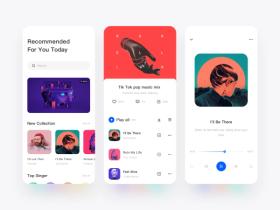How to Prioritize the Feature Development after You’ve Built an MVP
Published: October 31, 2022
20 min read
In this article, you'll learn:
1
🤔 Why Do You Need Prioritization?
2
📖 How to Prioritize Development: Basic Rules
3
8️⃣ Practical Ways To Prioritize Product Development
4
📚 So Which One Should I Choose?
5
🛠️ Tools That May Be Useful For Project Task Prioritization
6
💡 Conclusion
They’re just inventing a bike no one wants to ride. Potential users leave the app without any understanding of how to use it, DAU drops, and Investors stop being happy.
But you won’t this to be your case, right? So what is to be done?
🤔 Why Do You Need Prioritization?
Young startups often don’t notice the benefits of app development prioritization despite they are obvious. First, it helps you to achieve your business goals in a shorter time and with fewer efforts. Depending on the segment in which your company works (B2C, B2B or B2G), the right approach to prioritizing will let you increase:
- retention
- MAU and DAU rates
- session length
- user LTV
- number of paying users or customers.
So, basically, the project prioritization process looks as follows:
- Define the most important strategic goals which you want to achieve with your next release. What are your KPI’s and which of them do you need to increase first?
- Choose tactics. Come up with a list of features/improvements that will help you to increase the chosen KPIs most effectively.
- Think about how to implement these enhancements with the least effort and cost.
Let’s imagine that you’re an owner of a retail cosmetics app. Then:
- Your strategic goal may be to improve the UX and increase the user LTV by 20%.
- Your tactics, in this case, will include implementing features that can contribute to your strategic goal. For example, you may consider:
- adding a special “sales” screen and encouraging people to make spontaneous purchases
- enhancing the search feature by adding the possibility to sort and filter results (it will increase the chances that your customers will find what they were looking for and buy it)
- implementing AR technologies so that users can try products using their front-facing camera.
- Finally, your roadmap then will be based on features from the list above that will contribute the most to your goal and require the least resources for implementation.
But you may say, this is too obvious and a simplistic view which lacks many important details, right?
Read on, because now we’re going to share some tips on building your software development prioritization strategy.
Yet, if you want to jump to our 8 practical methods on building your prioritization plan correctly, just click here.
📖 How to Prioritize Development: Basic Rules
Rule # 1: Know Your Business Well
If you want to prioritize product development, you should be an expert in the field of your business. Here are a few tips that will help you to get maximum out of your post-MVP development.
- First things first. Define your aims.
So as to arrange your future app improvement, you should clearly understand what goals you pursue. Usually, they are based on the KPIs of your app (we’ll talk about it a bit later). Yet, as a rule of thumb:
- The ultimate goal for free apps (for example, chatting ones) that make the revenue from targeted ads is to increase the number of active users, retention rates and session length.
- Apps in the B2B/B2C segments are usually aimed at getting first paying customers (or increasing their number if you already have some) + getting higher average revenue per user.
Of course, each case should be treated individually, cause everything depends on your business aims and the current state of your mobile application. That’s why it’s important to define which goals are most important to you at this exact moment.
- Learn from the best.
Back in 1996, Steve Jobs said: “Picasso had a saying — “good artists copy; great artists steal” — and we have always been shameless about stealing great ideas”. We don’t encourage you to steal, but we see nothing wrong in learning from the best.
8️⃣ Practical Ways To Prioritize Product Development
We promised to provide you with 8 methods that will help you to define which tasks deserve your attention right now and which ones can wait a bit more. As a rule of thumb, they can be split into 2 groups:
- Quantitative — the ones that operate with numbers and figures, and can be calculated using special formulas.
- Qualitative — the ones that rely on opinions from your team, experts, users and don’t involve any metrics and calculations.
Let’s take a closer look!
Quantitative Methods
The 100-Dollar Test (Cumulative Voting)
This is one of the most straightforward and simple methods to prioritize product development that won’t take much time or effort. So what is the workflow here?
- Create a list of features for prioritization (a Backlog, in other words).
- Define who your main stakeholders are.
- Ask them to vote and gather the results.
The voting system is simple as that: each participant is given an equal amount of units (points, dollars whatever). So, basically, they just have to distribute them between all the possible options. Then you have to sum up the answers of all stakeholders and you will have a formed list of features to develop for the next update. Look at the example below:
📚 So Which One Should I Choose?
None of the methods that we described can be called as a bad or a good one. The same approach may work perfect under the certain circumstances and be ineffective in another environment. Yet, here are some recommendations by the Stormotion team that may help you to make the right choice:
🛠️ Tools That May Be Useful For Project Task Prioritization
Before we move on to the conclusion, we also would like to share with you a few tools that may come in handy when you have to prioritize product development at the post-MVP stage.
- Trello — a great tool for the project management with the help of boards and cards.
- ClubHouse — another project management software but with a wider set of functionality.
- Liquidplanner — a useful tool which pays much attention exactly to the prioritization.
- Aha! — a roadmapping software for PMs.
- ProdPad — a project management software with tools for the deep interaction with your customers.
💡 Conclusion
These were insights on how to prioritize development by the Stormotion team. The main rules you should follow to succeed are:
- Know your business well and set measurable aims.
- Analyze the most important KPIs and user feedback.
- Consider opinions of all participants of the project prioritization process.
- Create a backlog.
- Prioritize at a high-level and then concretize your goals.
It’s also possible to use development prioritization models that rely on different approaches:
-
Quantitative methods:
- The 100-Dollar Test.
- Semi-quantitative Analytical Approach.
- Scorecards.
-
Qualitative methods:
- Classification Ranking.
- The Kano Model.
- MoSCoW Analysis.
- AARRR Approach.
- Story Mapping.
Stormotion is a niche Mobile Agency, aimed to help Startups to Develop & Improve their Apps - working side-by-side with your In-House Product Team. We're happy to support you and bring your startup to the next level.
Was it helpful?
Read also

Stormotion's ChatGPT Journey

Top 5 Best Practices for Integrating ChatGPT in Your App

How to Build SaaS App Like Spotify
Our clients say
![Stormotion client Pietro Saccomani, Founder from [object Object]](/static/40e913b6c17071a400d1a1c693a17319/b0e74/pietro.png)
They make the whole business work for us, and their improvements are fundamental to our operations. They’re reliable, honest, and willing to try new things that will help us. We appreciate how flexible and easygoing they are.
Pietro Saccomani, Founder
MobiLoud
